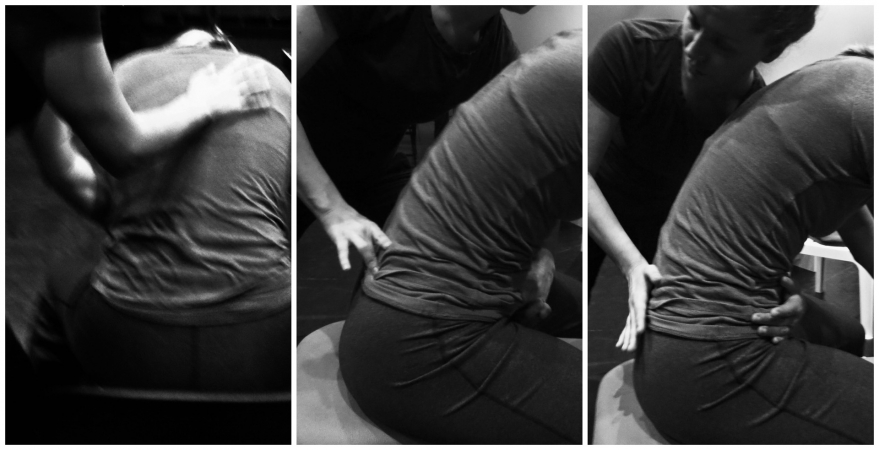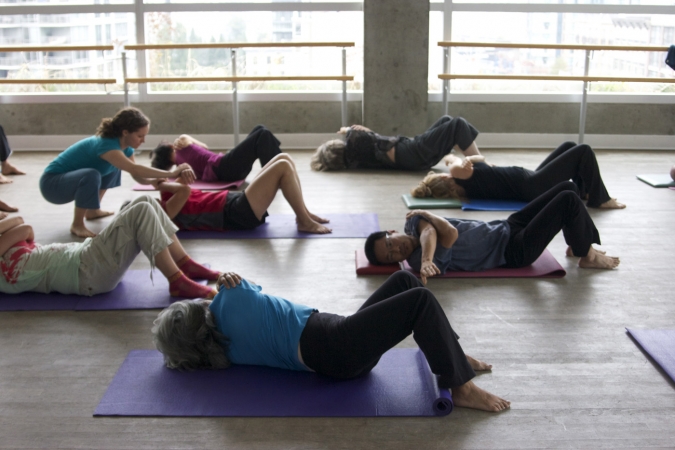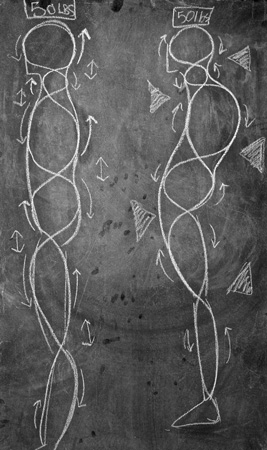Mitzvah Technique
“We are not born to ache so much.”
The Mitzvah Technique
The Mitzvah Technique is a body of work developed by Nehemia Cohen that stems from the Alexander Technique and the Feldenkrais Method. Nehemia discovered the Mitzvah Mechanism after working with diverse populations of artists, children and those suffering from debilitating back pain. This mechanism, activated through practice of the Mitzvah Exercise, functions to ripple the spine, re-establish the relationship between the head and pelvis and create synchronization in movement. There is a re-balancing effect of the whole body that allows the student to experience a sense of neutral alignment. Through everyday activities of sitting, standing and walking and regular Mitzvah Sessions the student can release tight muscles while re-patterning the neuromuscular system and correcting poor posture.
•
The Itcush Method
The Itcush Method is a series of exercises and theories developed by Modern Dance pioneer and Mitzvah Technique teacher Amelia Itcush. In her quest to teach students self care Amelia created and refined a body of work that helps to free the body from pain and physical restrictions through teaching self maintenance exercises. Her theories and practices of dynamic posture have aided people, from all walks of life, in creating a structure that is flexible, mobile and strong.
•
Itcush Method & Mitzvah Technique
Itcush Method and Mitzvah Technique incorporates table sessions, chair work, and floor exercises and can be done as private sessions, through group classes and individual self maintenance exercises. It addresses areas of concern such as:
Back, ankle, knee, hip, shoulder and neck pain
Scoliosis, Kyphosis
Muscular tension and imbalance
Headaches and chronic pain
Arthritis, joint disease
•
Who can benefit?
Office workers, teachers, health care professionals
Repetitive strain sufferers
Performers, dancers, musicians
Athletes and fitness professionals
•
Four Elements of Practice
1. Hands-on Table and Chair
This one-to-one practice re-patterns the neuromuscular system and realigns the skeletal system. The ‘teacher’s’ work rests on the premise that the ‘student’ moves in familiar patterns. When a habitual movement pattern prevents optimal physical functioning, an outside source is required to change this pattern. Change is achieved through a process of gentle hands-on manipulation and verbal cueing by the teacher as the student strives to ‘let go’ and ‘allow’ rather than ‘do.’ As the student releases pressure, tension and holding patterns they often experience freedom of movement and recovery from pain.
•
2. Exercises
Exercises on the floor, chair and standing assist the body in clearing pressure and tension while increasing mobility, flexibility and strength. These exercise were developed in response to the students’ need to maintain changes brought about by hands-on work. They are prescribed to people developing a ‘self-maintenance program.’ Activation of all the primary principles and theories in this work is important in assisting the student in developing both a physical and cognitive understanding of the manner in which change occurs in the body.
•
3. Theories and Patterns of Misuse
Increasing kinaesthetic awareness in everyday patterns leads to the understanding that there is no dancing body, acting body, sleeping body, and so forth. The body is always the body. To break patterns and stop building tension and aggravating injury an individual must learn to change the source of the problem through attention to its primary origin. The most common changes made to everyday movement are sitting with the feet flat on the ground, dropping the head and neck in sitting and standing, and standing in ‘centre arch.’ Profound change can be accessed by surprisingly simple shifts in everyday activities such as sitting standing and walking.
•
4. Itcush into Dance
This series of ‘small chair’ exercises was initially developed for dancers as a means to activate the Mitzvah Mechanism in technical dance training. The practice of ‘small chair’ is helpful for anyone wanting to activate and strengthen efficient movement patterns. This work is governed by the principle of ‘direction of energy.’ The exercises are based on the notion that when the body aligns with the direction of energy, the bones act as the creative force and the muscle take a supportive role.
•












